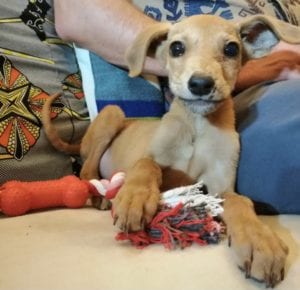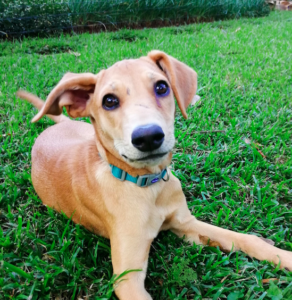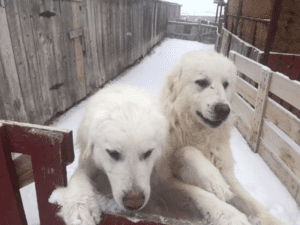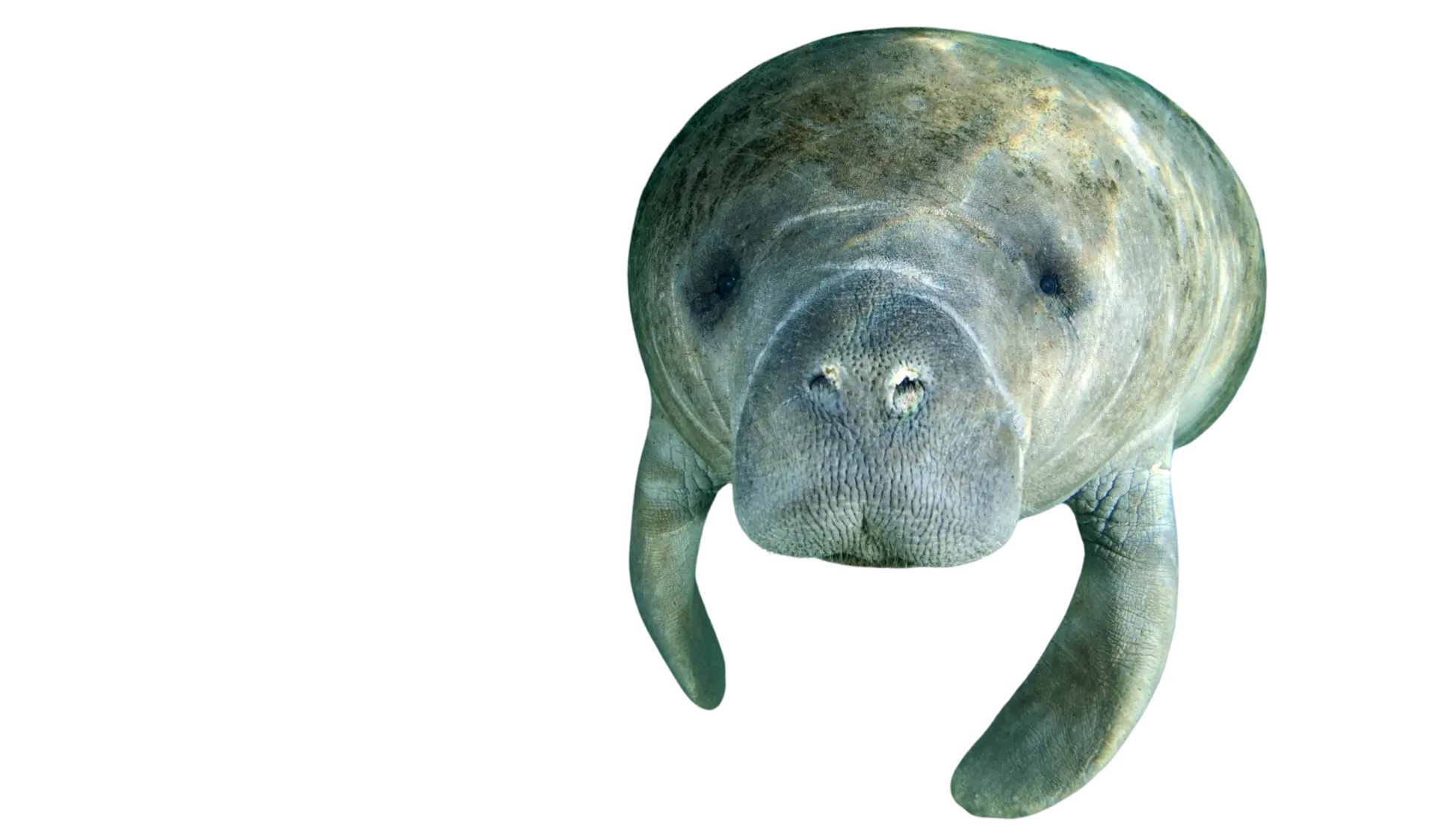The puppy was not in good shape when she found it. Bones protruding and a swollen tummy and her luminous eyes begging for help.
The IWCN Wildlife Coexistence Council member Dr. Christine Lamanna works as a climate change researcher in Nairobi, Kenya. On January 21, she was walking home from work, with plans to bake an apple pie to celebrate the inauguration back home in the U.S. But those plans changed when she spotted a small pup in a ditch at the entrance to her neighborhood.

It was just a puppy. “I could tell she was not in good shape,” said Christine. She picked the pup up and scoured the neighborhood, looking for the owner, but without any luck. So, Christine took the puppy home and that evening, instead of baking her pie, she spent hours pulling ticks off the little stray. By the next day, she knew the pup was home to stay.
Christine did end up celebrating the inauguration another way, though. She decided to name the puppy Kamala, now Kami for short, in honor of the new Vice President of the United States.

At first, Christine assumed that Kami was a mix of different local dogs, which is typically the case for stray dogs in Kenya. However, after doing some research, she was surprised to learn that Kami was an Africanis, locally referred to as a Kenyan Shepherd Dog.
Africanis are just one of many dogs that have been used to guard livestock globally for thousands of years. There are many different breeds, including Great Pyrenees, Anatolian Shepherd, Akbash, Maremma Sheepdog, Knagal, Komondor, Tibetan Mastiff, Šarplaninac (read more about this breed on our blog), and more. Typically, these dogs are 100+ lbs., can live outside all year round, and are skilled at detecting predators. However, just because a dog is one of these breeds does not mean that it is going to be a successful livestock guardian dog. They require training and bonding with livestock to be successful.
Ideally, LGDs are placed with the domestic livestock sometime between eight and 16 weeks. Finding a balance between human interaction and spending time with their new pack, so to speak, is essential to helping LGDs to adapt and develop protective instincts.
Paul White, another Coexistence Council member, has found that in Romania and Eastern Europe, the essential component to the success of the LGDs is when the herder is actively involved. In a recent conversation, he told us that the biggest difference between LGD practices in the West versus in Eastern Europe is that “the shepherds are with the flock all the time, they are literally living with the flock. They live right next to the pen and if a wolf or bear comes towards the sheep, they will jump up with the dogs, so they are very much a part of the system of protection.”
In the 1970’s LGDs were introduced to the United States. But while the dogs were introduced, the best practices for how to use them to manage herds has lagged behind. It’s not uncommon to see these dogs out with a herd without shepherds. Tina Overgaard, who recently founded the Coalition for Livestock Guardian Dogs (CLGD) in Utah, says, “these dogs go back thousands of years, but if you look back, they have always worked in tandem with the herder, as a partner with the herder, but it is not like that in a lot of Western states.”

Tina moved to Utah to enjoy a more rural lifestyle. As a teacher, she met many ranchers and ranching families and started to learn more about their operations. As an animal lover, she zeroes in on the dogs. She learned that the dogs lack protection from any animal welfare laws because they are classified as livestock. Turns out, livestock includes any domesticated nonhuman vertebrate creature used for agricultural operations: that includes working dogs such as livestock guardian dogs, heelers, and border collies. It also means that these dogs are exempt from animal cruelty statutes. Abandoned and injured LGD, including litters, have been found by good Samaritans and sometimes the dogs are mistaken for strays and taken to an animal shelter. Most, if not all, of these incidents can be prevented if good practices are implemented and guidelines are enacted. Through CLGD, Tina advocates for the protection of LGDs. As a new organization, CLGD plans to launch programs to help those producers who use LGDs in the United States manage them well, including microchipping, sterilization, medical support and training programs.
Tina’s goal is to work with herders and ranchers to develop these solutions and is focused on “getting dogs some protections that are parallel to the service that they provide to the community.”
Over the centuries, dogs have continued to prove that they are man’s –and woman’s– best friend. Many of their traits are due to their common lineage with wolves such as their strong bond to family, intelligence, and alertness. This is clear, not just with our pet dogs, like Kami, but with working dogs like LGD’s. Over time, dogs have helped us explore the natural world; protect us; helped us make a living; and better coexist with wildlife.

